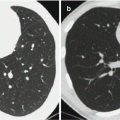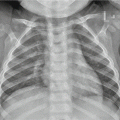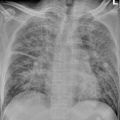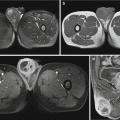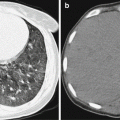© Springer Science+Business Media Dordrecht and People’s Medical Publishing House 2015
Hongjun Li (ed.)Radiology of Infectious Diseases: Volume 210.1007/978-94-017-9876-1_88. Epidemic and Endemic Typhus
(1)
Department of Radiology, Beijing You’an Hospital, Capital Medical University, Beijing, China
(2)
Department of Radiology, Beijing Fengtai Hospital of Integrated Traditional and Western Medicine, Beijing, China
Typhus is an acute infectious disease caused by Rickettsia. Clinically, it can be divided into two categories, including epidemic typhus and endemic typhus. Epidemic typhus is also known as louse-borne typhus which commonly occurs in winters and springs and causes severe systemic symptoms. It is caused by Rickettsia prowazekii and transmitted via human body louse. The clinical symptoms include sustained high fever, severe headache, skin rashes, and central nervous system symptoms, with an acute onset. The whole course of epidemic typhus lasts for 2–3 weeks, with most cases being self-limited. Endemic typhus, also known as flea-borne typhus or murine typhus, is caused by Rickettsia mooseri and transmitted via rat flea, with common occurrence in autumns and winters.
8.1 Etiology
Rickettsia prowazekii, the pathogen of epidemic typhus, is a gram-negative tiny bacillus, with a size of (0.3–1) μm × (0.3–0.4) μm. It has polymorphism in the intestinal wall cells of human body lice, with strong resistance to low temperature and dryness. However, it is sensitive to heat, ultraviolet rays, and common disinfectants and can be inactivated at 56 °C for 30 min.
Rickettsia mooseri, the etiologic agent of endemic typhus, shares similar biological properties with Rickettsia prowazekii.
8.2 Epidemiology
8.2.1 Source of Infection
Patient infected with epidemic typhus is its only source of infection, with infectivity in the last 1–2 days of the incubation period. The infectivity is at its peak in the first week after the onset of the disease, which usually lasts for no more than 3 weeks. In extremely rare cases, the pathogen can incubate in the mononuclear phagocyte system for a long period of time causing relapse when the body’s immune system is compromised; this occurrence is known as recurrent typhus.
House mouse is the major source of infection of endemic typhus, with Rickettsia mooseri transmitted between mice via mouse fleas. After the death of the infected mouse, mouse fleas leave the corpse of their host to sting or bite human. Therefore, human can be infected. In addition, the sources of infection also include patient, cattle, sheep, pig, horse, and mule.
8.2.2 Route of Transmission
Human body lice are carriers of Rickettsia prowazekii to transmit epidemic typhus, with body lice as the most common carriers, followed by head lice. After stings or bites of infected lice, Rickettsiae multiply in epithelial cells of lice intestinal wall and then are discharged along with feces. When lice carrying Rickettsiae sting or bite a healthy person, the feces with Rickettsiae are discharged on the skin, which enters the person’s body via scratch or bite marks of the skin. Occasionally, the pathogens can also gain their access into the human body via the respiratory tract or conjunctiva. The high fever or death of the infected patient causes lice to transfer to a new host. In such a way, the disease spreads in humans.
Endemic typhus spreads with mouse flea as the carrier of the pathogen, with similar route of transmission to epidemic typhus. Rickettsiae gain their access into the human body after surviving in the cells of flea intestinal wall and replicates in large quantity. Mouse flea stings or bites cannot introduce Rickettsiae into the human body. However, as they discharge feces or vomits, Rickettsiae can then gain access into the human body via scrapes on the skin. The pathogen can also gain its access into the human body via the respiratory tract and conjunctiva.
8.2.3 Susceptibility
People are generally susceptible to typhus. Permanent immunity can be acquired after its infection. Cross immunity against epidemic typhus and endemic typhus does exist.
8.2.4 Epidemic Features
The prevalence of epidemic typhus is closely related to human lice, which commonly occur in winter. Occurrence and prevalence of epidemic typhus can be found during war and famine.
Endemic typhus is an infectious disease with natural focus and sporadically occurs worldwide. It is more common in tropical and subtropical areas. In China, the incidence rate is higher in north, southwest, and northwest areas, and the disease is more common in late summer and autumn. Epidemic typhus and endemic typhus can concur in one regional area.
8.3 Pathogenesis and Pathological Changes
8.3.1 Pathogenesis
The major pathogenesis of epidemic typhus is pathogen-induced vascular lesions, toxin-induced toxemia, as well as some immune and allergic reactions.
After invasion of the pathogen into the human body via skin defects, it first grows and replicates in local lymphatic tissues or endothelial cells of minor blood vessels and capillaries causing rupture of the cells and overflow of the pathogens. Initial rickettsemia consequently occurs. After that, the pathogens spread into endothelial cells of minor blood vessels in all organs establish new foci of infection. After a large quantity replication of the pathogen, secondary rickettsemia and various clinical symptoms occur. At the same time, the large quantity of pathogens causes swelling and rupture of the endothelial cells, causing blockage and embolism in vascular lumen with different severities. In addition, perivasculitis, tissue necrosis, and increased capillary permeability occur, causing hemorrhage, plasma extravasation, reduced effective blood volume, DIC, disturbed blood coagulation mechanism, oliguria, azotemia, and myocardiac lesions.
8.3.2 Pathological Changes
The basic pathological changes of epidemic typhus are located in vessels, with accompanying perivascular lesions in systemic parenchymal organs. Generally, the pathological changes of minor blood vessels are prominent, with proliferation, thrombus, and necrosis. The vascular endothelial cells proliferate in a large quantity to form thrombus. Periodical or round-shaped tissue necrosis can be found in vascular walls. Infiltrations of plasmacytes, monocytes, and lymphocytes can be found at vascular adventitia, which shows characteristic perivascular miliary typhus tubercles or granulomas. Such pathological changes can be found all over the body, which are especially obvious in skin dermis, myocardium, brain, meninges, liver, kidneys, and alveolar wall. Corresponding clinical symptoms occur, including skin rashes, cardiovascular disorders, psychiatric abnormalities, meningeal irritation sign, hepatic dysfunction, pneumonia, and shock.
The pathological changes of the central nervous system are commonly found in the cerebral gray matter, cerebellum, medulla oblongata, and basal ganglia. Their severity and diffusivity can greatly elongate the duration of psychiatric and neurological symptoms even after drop of body temperature.
The early manifestations of the disease include typhus tubercles and the toxemic symptoms, with no characteristic pathological changes. These early symptoms include bronchitis, meningoencephalitis, subarachnoid minor hemorrhage, and hepatorenal swelling. The spleen shows acute swelling, with proliferations of cells in the monocyte-macrophages system, lymphoblasts, lymphocytes, and plasmacytes. In addition, the kidneys show hemorrhage, edema, and degenerative changes of parenchymal cells.
Endemic typhus shares similar pathogenesis and pathological changes with epidemic typhus. However, the cases of endemic typhus have slight vascular lesions and rare occurrence of thrombus in minor vascular vessels and capillaries.
8.4 Clinical Symptoms and Signs
8.4.1 Epidemic Typhus
Epidemic typhus can be divided in to three types: typical typhus, mild typhus, and recurrent typhus.
8.4.1.1 Typical Typhus
The incubation period of epidemic typhus lasts for 10–14 days. In some cases, prodromal symptoms occur that persist for 2–3 days, such as fatigue, headache, dizziness, chills, and low fever. However, most cases show an acute onset, with accompanying chills, severe and persistent headache, systemic muscles pain as well as conjunctival and facial congestion.
Stay updated, free articles. Join our Telegram channel

Full access? Get Clinical Tree




